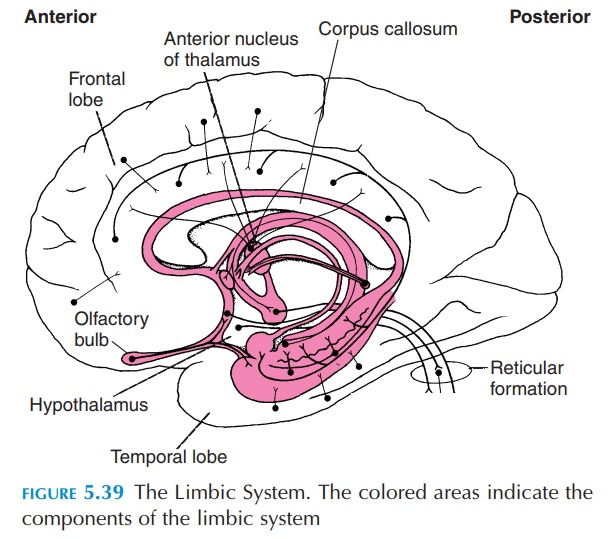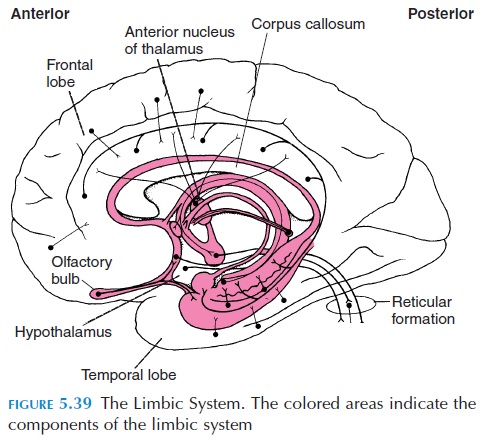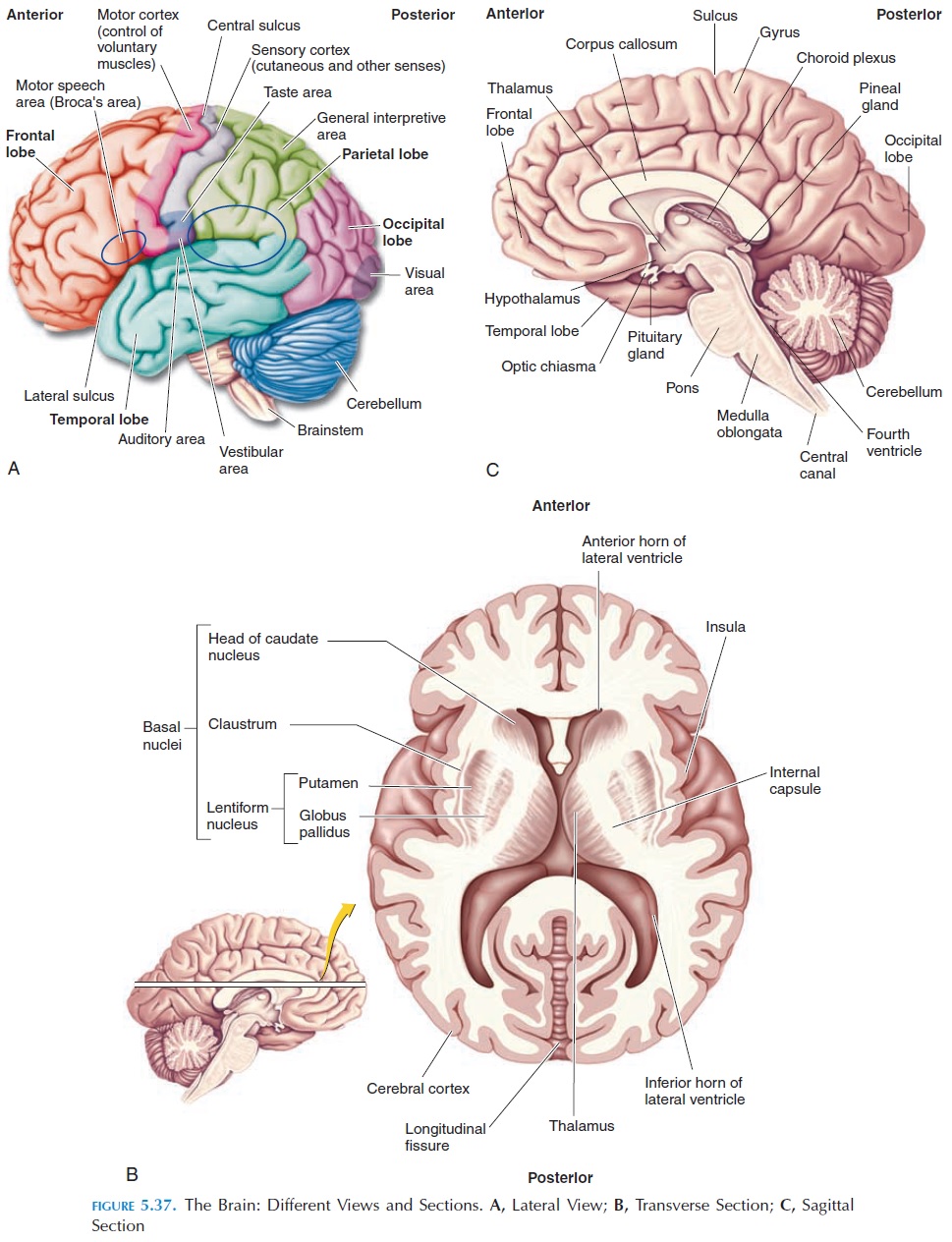Chapter: The Massage Connection ANATOMY AND PHYSIOLOGY : Nervous System
The Limbic System - Brain and Brain Divisions

THE LIMBIC SYSTEM
The limbic system (see Figure 5.39) is a collection of nuclei and tracts involved with creation of emotions, sexual behavior, fear, rage, motivation, and processing
These components of the limbic system are primarily located as a border at the point where the cerebrum is connected to the midbrain. This in-cludes the rim of gyri around the corpus callosum, some parts of the temporal lobe, hypothalamus, thal-amus, and olfactory bulbs, among other regions.

Emotions
Emotions have both physical and mental compo-nents; for example, it requires awareness of the sen-sation and its meaning; the association with past memories; and the urge to act on the emotions and the physical changes that accompany it, such as in-creased heart rate and blood pressure. Hence, the limbic system is complex and has connections with many areas, such as the thalamus (sensory relay sta-tion) and hypothalamus (which links emotions to the autonomic and endocrine system). The paucity of connections with the cortex, which is responsible for voluntary control, is the reason for the inability to turn emotions on and off.
Sexual Behavior
The limbic system, along with the hypothalamus, is responsible for sexual behavior. Although copulation is a result of various reflexes integrated in the spinal cord and brainstem, the behavior that accompanies it is regulated by the limbic system and hypothalamus. In humans, however, it is further conditioned by so-cial and psychic factors.
Fear and Rage
Fear and rage are emotions regulated by the limbic system and hypothalamus. The physiologic changes that accompany them, such as pupillary dilation, cowering, and sweating, are caused by the autonomic system; however, the limbic system is required for initiating the response. Both fear and rage are pro-tective responses to threats in the environment. Again, these emotions are conditioned by social fac-tors and sex hormones.
Motivation
Experiments in which electrodes have been im-planted in certain areas of the brains of animals and humans, with the ability of the experimental ani-mals/humans to stimulate the area using these elec-trodes, have produced interesting findings. If the electrode is implanted in certain areas, pleasure is produced, and the animals/humans tends to stimu-late the area repetitively and continuously. Other ar-eas have been identified that, on stimulation, produce emotions such as fear and terror. These experiments have shown that the body has reward or approach systems and punishment or avoidance systems, which are part of the limbic system and play an im-portant role in motivation.
The neurotransmitters secreted in this system have been identified, and drugs that act on the receptors, production/destruction of these neurotransmitters have an effect on mood and emotion.

Related Topics